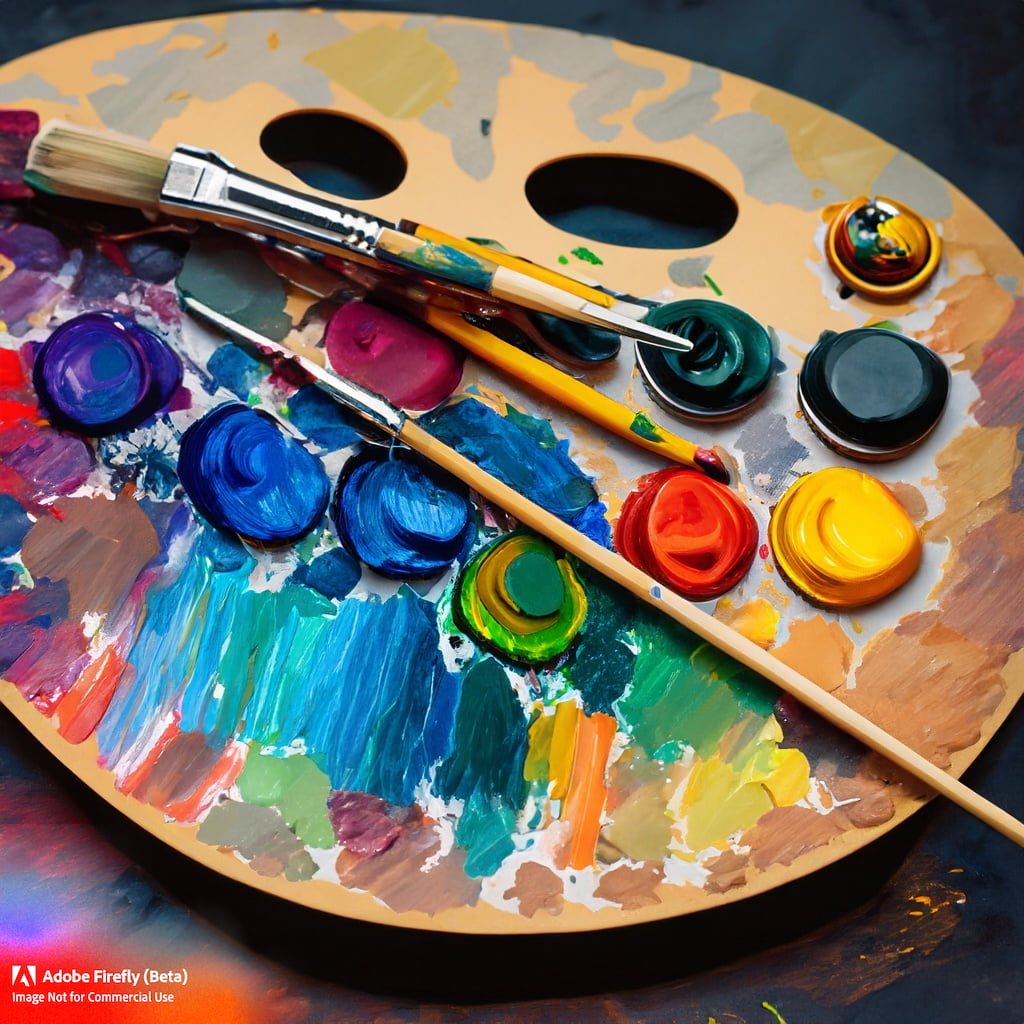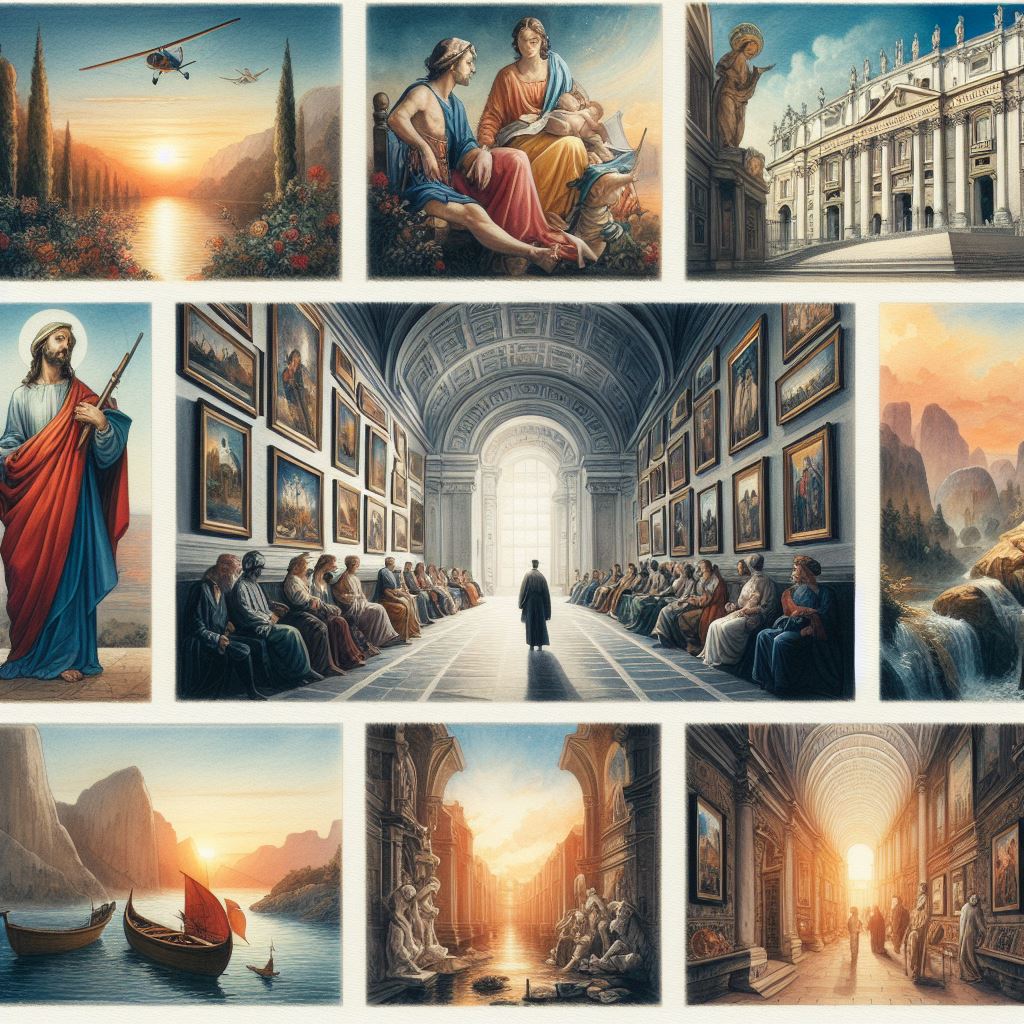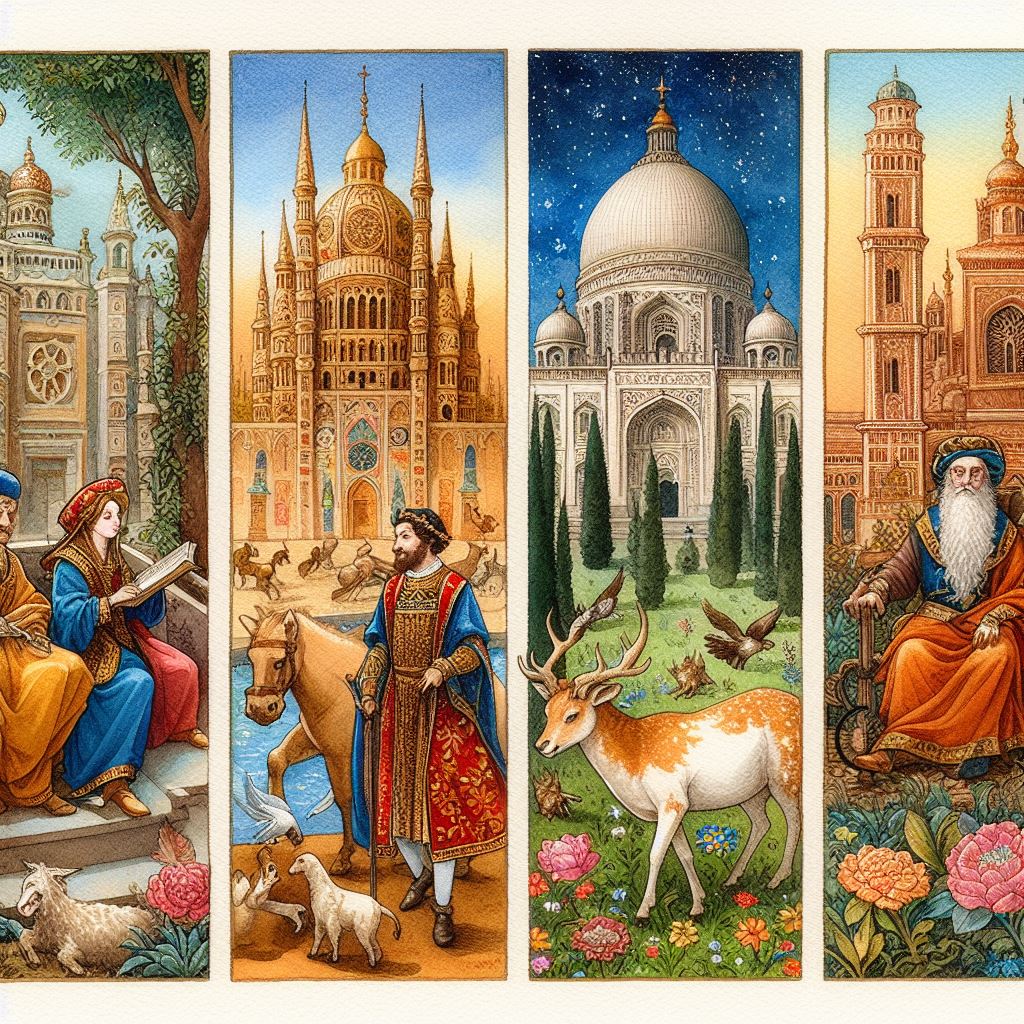Basics of Painting

Are you prepared to embark on a vibrant journey into the realm of painting? Whether you’re a novice artist or have previously dabbled in artistic expressions, understanding the fundamentals of painting is crucial for nurturing your skills and unleashing your inner artist. In this guide to the Basics of Painting, we will delve into the essential techniques, explore different mediums, and provide tips and tricks to help you create breathtaking works of art. So, grab your paintbrushes, don your smock, and let’s dive into “The Fundamentals of Painting.”
1. Grasping Paintbrushes: Your Artistic Toolbox
Paintbrushes serve as an artist’s trusty companions, available in various shapes, sizes, and bristle types, each with its own unique purpose. Familiarize yourself with these essential tools to enhance your painting experience.
1.1 Flat Brushes: Versatility and Precision
Flat brushes, as their name suggests, possess a flat and rectangular shape. They excel at producing broad strokes, filling large areas, and achieving precise lines and edges.
1.2 Round Brushes: Flexibility in Curves
Round brushes feature a rounded tip and a full belly. They are ideal for creating curved lines, blending colors seamlessly, and adding intricate details to your artwork.
1.3 Fan Brushes: Texture and Special Effects
Fan brushes boast bristles shaped like a fan, enabling you to create distinctive textures and special effects such as foliage, clouds, or hair. They also prove useful for blending and smoothing.
2. Selecting the Right Medium: Exploring Your Options
Choosing the appropriate medium is pivotal, as it determines the characteristics of your artwork. Here are several popular mediums employed in painting:
2.1 Acrylics: Versatility and Quick-Drying
Acrylic paints are renowned for their versatility, vibrant colors, and rapid drying time. They can be diluted with water for a transparent effect or layered to achieve rich, opaque colors.
2.2 Oils: Timeless and Classic
Oil paints offer a traditional approach to painting. They possess a slow drying time, allowing artists to blend colors seamlessly and create smooth transitions. Oils are renowned for their depth and richness.
2.3 Watercolors: Delicate and Transparent
Watercolors are beloved for their delicate and transparent nature. They are often employed in landscapes, still life, and portraits. Watercolors can be applied in layers to achieve various shades and textures.
3. Preparing Your Canvas: Setting the Stage
Prior to commencing your painting endeavor, it is essential to prepare your canvas meticulously. This step ensures a smooth surface and enhances the longevity of your artwork. Follow these steps to prepare your canvas:
- Initiate the process by priming the canvas with a layer of gesso, sealing the surface and preventing paint from seeping through.
- Employ sandpaper to gently smooth the surface, creating a slightly textured foundation for better paint adhesion.
- Rid the canvas of any dust or debris using a clean, dry cloth.
- Optionally, apply a layer of tinted ground to provide a colored base for your painting.
4. Fundamental Painting Techniques: Mastering the Essentials
To breathe life into your artistic vision, it is imperative to master fundamental painting techniques. Here are some essential techniques to get you started:
4.1 Blending: Achieving Smooth Transitions
Blending involves seamlessly merging colors to produce smooth gradients and soft edges. Utilize a brush
or your fingers to gently blend colors together, creating a harmonious transition.
4.2 Layering: Building Depth and Texture
Layering entails applying multiple layers of paint, one atop the other. This technique imparts depth, texture, and dimension to your artwork. Begin with thin, transparent layers and gradually progress to thicker, opaque ones.
4.3 Dry Brushing: Adding Texture and Highlights
Dry brushing is a technique wherein you use a relatively dry brush with minimal paint to create texture or highlight specific areas of your artwork. It adds depth and realism to your paintings.
5. Basics of Painting (FAQs)
5.1 FAQ 1: What are the essential painting supplies I need as a beginner?
As a beginner, you will require basic supplies such as paintbrushes, paints (acrylic, oil, or watercolor), a palette, a canvas or painting surface, and a palette knife for mixing colors.
5.2 FAQ 2: How do I clean my paintbrushes after painting?
Thoroughly cleaning your paintbrushes is vital for maintaining their quality and extending their lifespan. Rinse the brushes with warm water, gently remove excess paint with a paper towel, and employ mild soap or brush cleaner to eliminate any remaining residue. Rinse them thoroughly, reshape the bristles, and allow them to dry.
5.3 FAQ 3: How can I rectify mistakes in my painting?
Mistakes are an inevitable part of the artistic process. To rectify them, allow the paint to dry, then paint over the area with the desired color. Alternatively, employ a damp cloth or sponge to carefully wipe off wet paint. If the mistake persists, lightly sand the surface and repaint.
5.4 FAQ 4: How can I improve my painting skills?
Enhancing your painting skills necessitates time and practice. Experiment with various techniques, study the works of other artists, enroll in art classes or workshops, and seek constructive feedback from fellow artists or art communities. Remember, practice makes perfect!
5.5 FAQ 5: Can I mix different paint mediums?
Although it is generally recommended to focus on a single medium when starting out, some artists enjoy experimenting with mixed media. Blending different paint mediums can yield unique effects; however, it requires understanding the properties and compatibility of the mediums being used.
5.6 FAQ 6: How can I overcome a creative block?
Creative blocks are common obstacles encountered by artists. To overcome them, explore new subjects or styles, take breaks and engage in other creative activities, visit art exhibitions or galleries, or seek inspiration from nature and everyday life.
Conclusion
Congratulations! You have now acquainted yourself with “The Fundamentals of Painting.” Remember, painting is a journey of self-expression and creativity. Embrace the process, experiment with various techniques and mediums, and, most importantly, have fun! Whether you are a budding artist or an experienced painter, these fundamentals will guide you in your artistic endeavors. So, seize your brushes, mix your colors, and let your imagination soar on the canvas.


